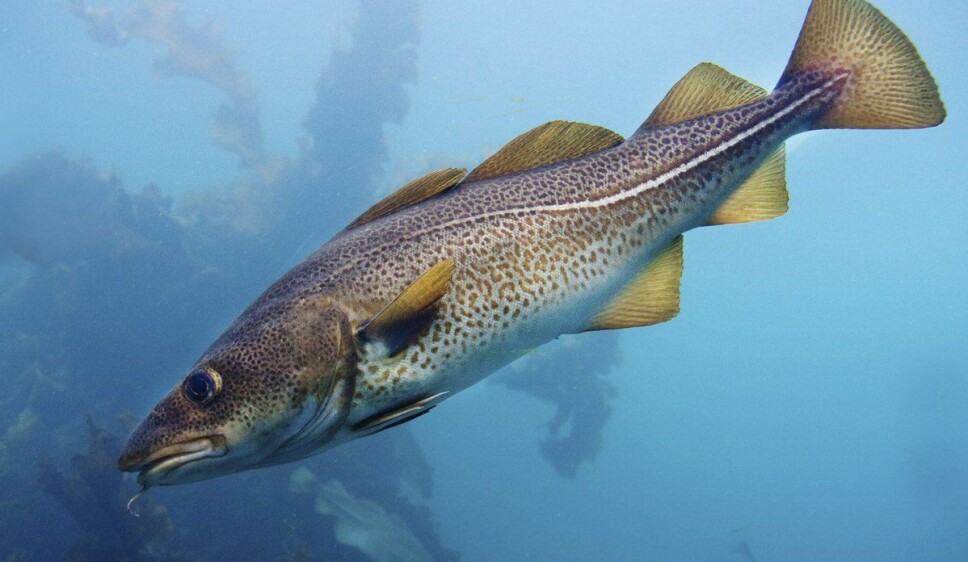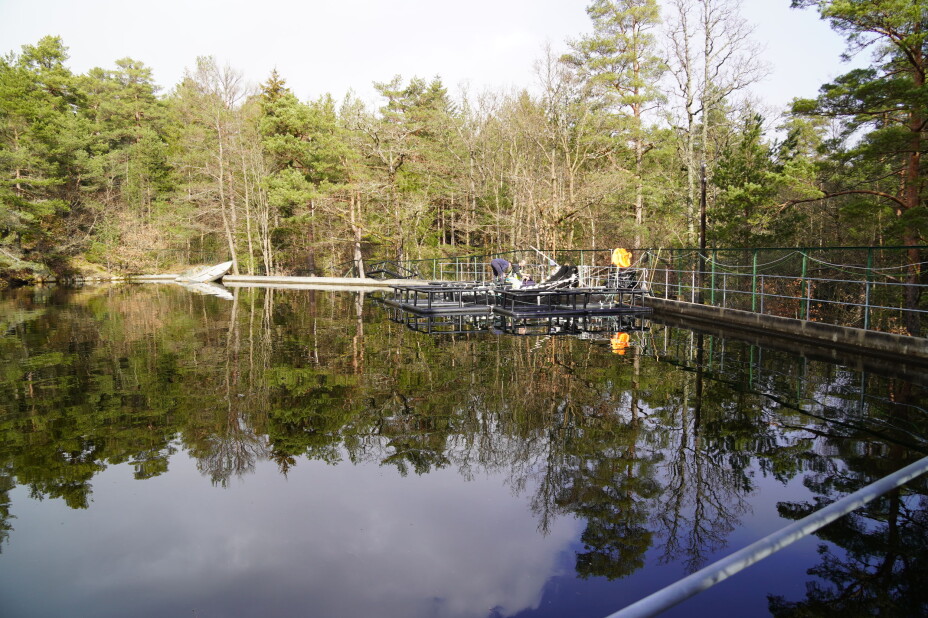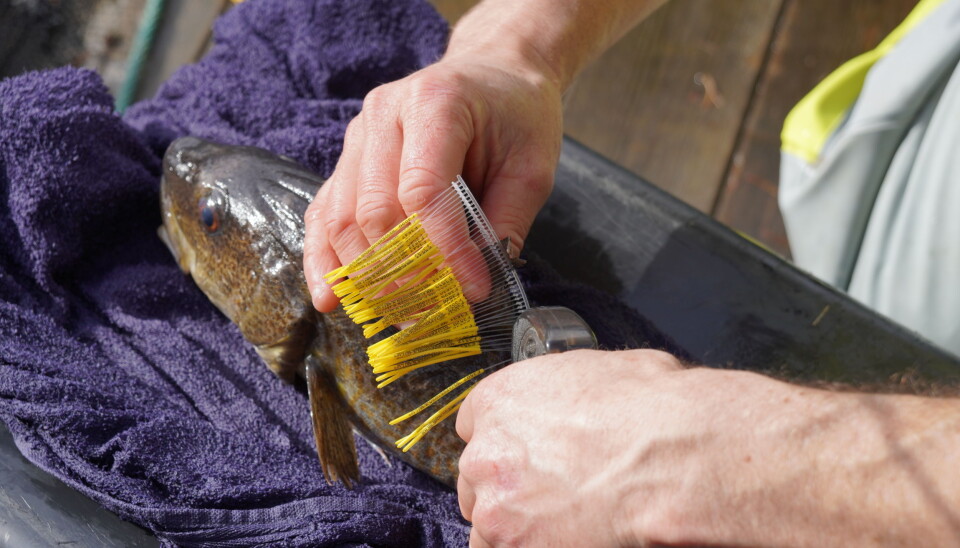This article is produced and financed by the Institute of Marine Research - read more

Size matters when the cod go into spawning season
Below the sea’s surface, the cod spawning season is now well underway. We trapped cod in a pen rigged with cameras and hydrophones to study the spawning live.
The Institute of Marine Research’s Flødevigen research station in Arendal has a seawater tank full of cod that spawned during the period 16-20 March. The spawning was filmed using a two-camera rig with surround sound.
“Our main aim is to understand the function of cod drumming, and what it is that makes some males more attractive than others. Our secondary purpose is to inject the cod with small transmitters that will give us information about how cod accelerate and how deep they swim. We expect to see a kind of personal signature in spawning behaviour,”says Rebekah Oomen, a researcher at the Institute of Marine Research (IMR).
When Oomen and her fellow researchers at the IMR analyse the data from the videos and transmitters, it will give them a reference point that will help them to understand the behaviour of cod when they spawn in the wild.

Waving their fins to show off
Some research has already been done on cod behaviour during spawning. For example, we know that male cod work hard to gain the affection of a female. In the video below you can hear Rebekah explain this courtship ritual, and also hear an example of cod drumming. Don’t forget to turn on the sound!
In Norwegian waters, mid-March is often the peak spawning season, although spawning may continue over a period of several months. At this time of year, cod gather at ocean banks and above underwater slopes, giving rise to a competition between the males.
“A female cod that enters the territory of a dominant male will often lie down on the sea bottom. He then approaches her, inspects her and begins to swim above her in a kind of circular dance,” explains Oomen. His fins become erect, and he starts to wave them as a way of showing off.
“The female cod remains still. Her fins hang down limply, and she doesn’t need to make much effort,” laughs Oomen.
Videos are in English:
Important to have a big muscle
There is a good reason why the researchers are interested in cod drumming. Rebekah Oomen says researchers at IMR and Centre for Coastal Research have done laboratory research into the number of young produced by male cod.
As part of this, colleagues at CCR have weighed the drumming muscle in a previous study, and calculated how big it is in relation to the rest of the male cod’s body.
“It turns out that the males with the biggest drumming muscles have more young. And a study from the 90's also show they have less milt left at the end of the season, which indicates that they have made use of more of it.”
Studies have found that the drumming sound makes the female change her behaviour. She signals that she is ready to spawn by swimming up through the water and exposing her belly to the male cod.
“The male then chases her in an attempt to lock his pelvic fin to hers.”
Important to have a big fin
When the male cod notices that the attraction is mutual, he attempts to force the female up to the surface. The aim is to get as close to each other as possible, in order to increase the probability of fertilisation taking place when the eggs and milt are released.
Here size really does matter.
“Research has shown that the length of the fins used by the male to hold onto the female is important. A longer fin increases the male’s chances of success,” explains Oomen. So, at the moment of spawning, he grips the female, and releases his milt.
But this doesn’t go unnoticed by the other males, who may not have managed to find a partner.

Others want to get in on the act

“If a male catches a female at the surface, around 90 percent of her eggs are fertilized by her chosen mate.”
But the other males notice what is happening. And they take their chance:
“They rush in and release their milt as well. This means that around 10 percent of the eggs are fertilized by other opportunistic males.”
Big old ladies have most eggs
Some female cod are particularly important to the population. Big and old female cod are particularly important, according to Oomen.
“The big females have a disproportionately high number of eggs, and that is important when looking at the reproductive potential of a population.”
While the males’ milt is relatively unlimited, the female’s eggs are more valuable because of their limited number.
“That is also why she is the one who decides how she wants to use her eggs.”
Cod drumming tell us about the development of speech
The grunting and drumming sounds that cod make when spawning are more than just an isolated part of the courtship ritual.
When spawning in the dark, sounds play an important role in guiding animals.
In fact, it may tell us something about the development of acoustic communication, says Oomen:
“We know that acoustic communication has its origins in night-time activities, including reproduction. As such, cod drumming offers an important insight into evolution.”































